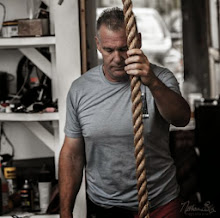Rolfers are famous for the modality we use and it's ability to change the structure of our clients. When the practitioner thinks that it is something that they are introducing into the clients structure which is creating the change this creates a problem. In other words these practitioners think that they are intruducing some "thing" into their clients which didn't previously exist.
I rebelled against this somewhat egocentric way of working with clients. My rebellion led me to a different concept; what we were doing is "uncovering" something inherent in our client's structure which was good by chipping away what was hiding this inherent "better" posture.
My analogy was that Rolfing a body was like sculpting was to a piece of granite. The sculptor didn't add to the granite but rather freed the scuplture that was bound by it. This is different than the idea that we don't to work with resolution of a body's problems but rather enhance the good, functional parts that exist in the body and that these somehow can rise above the restrictions to express themselves.
This is a nice concept but rather simplistic to my current thinking, I reserve the right to change my thinking. To my current thinking the body will always be as energetically efficient as it can be in that particular moment. In other words, the body has no allegiance to anything, postural, habitual, movement... that it doesn't deem to be energetically efficient. Given this the posture we see, the movement we see will be the BEST that that body can perform at that time, in that moment, if you will.
What we, as change agents, want, is not induce change in the structure but rather suggest to the body a new, improved--more energy efficient--way to be. If this suggestion is accurate then the body will accept it, no questions asked. If it's not then it will be rejected also without bias. The trick, to me, is to make a number of small suggestions, to break the interventions down into easily discerned parts and then step back and see if they were accepted. This is in leiu of making larger broader less discriminated interventions that may not be accepted in whole, but who's smaller parts may have been.
Energy efficiency is the name of the game. From this perspective, every posture we see is predicated on its being the most energetically efficient one, for that body at that time. The danger of learning concepts like conformation and postural analysis is that we can become fixated on what we think is important for a body and forget to let the body show us what it needs. By making small interventions and seeing if they've been accepted before making another suggestion for change we can; build on our successes, work more efficiently, not waste the nervous system attention we need for change to occur...
What do you think?
Thursday, February 28, 2008
Subscribe to:
Post Comments (Atom)




No comments:
Post a Comment